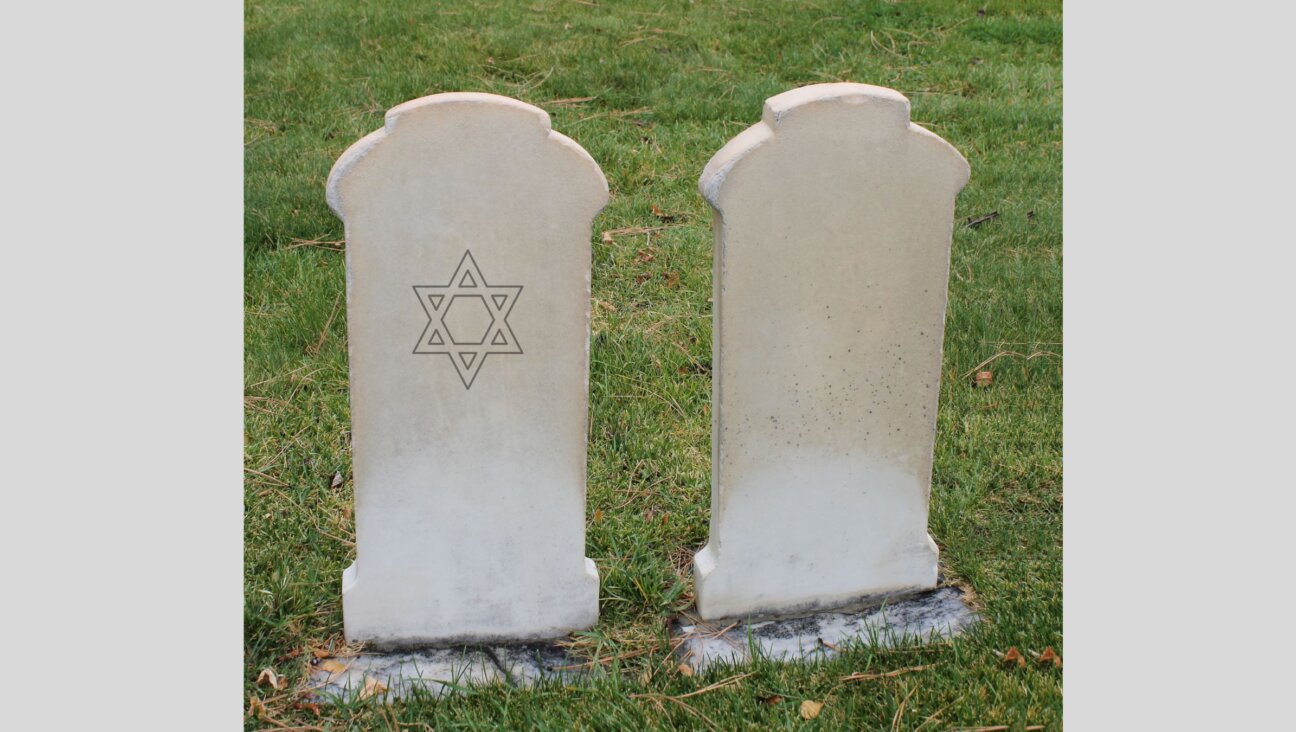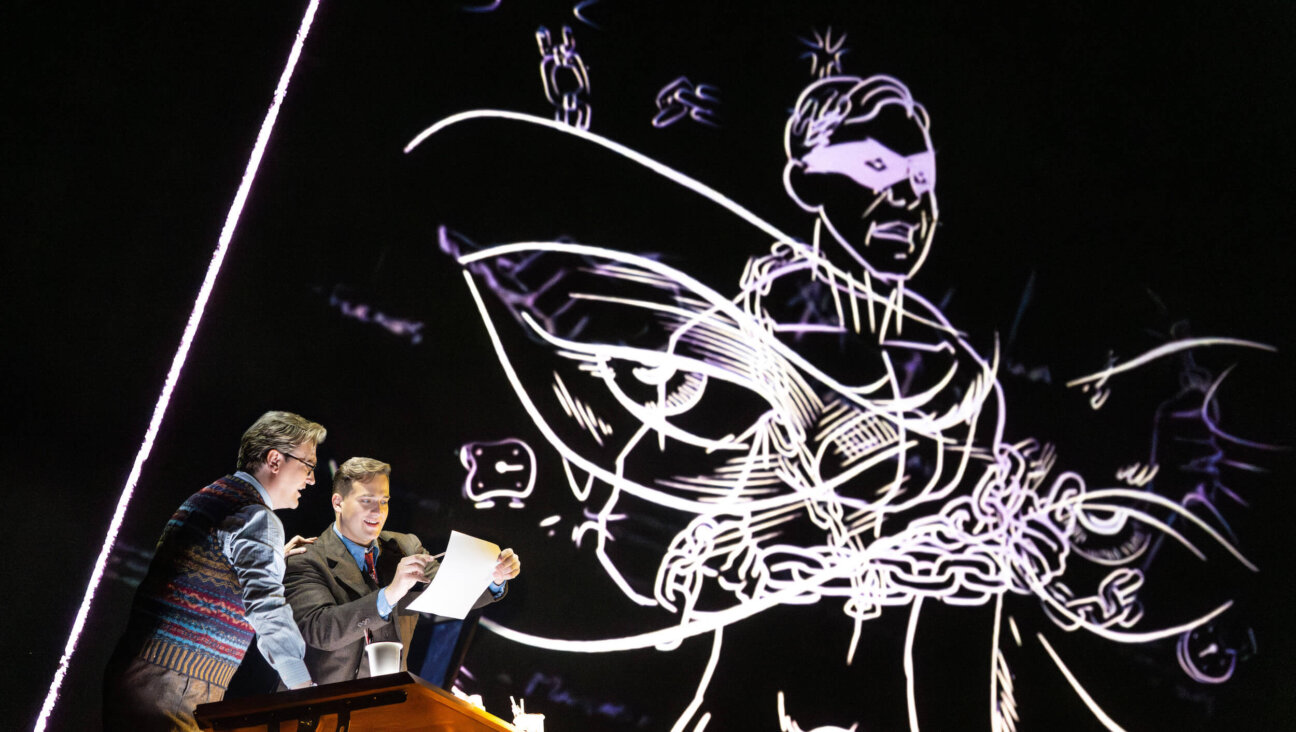Watermelons, dogtags, red hands — a guide to the symbols of Oct. 7 and its aftermath
A guide to the terms and symbols that have become unavoidable since the outbreak of the Israel-Hamas war
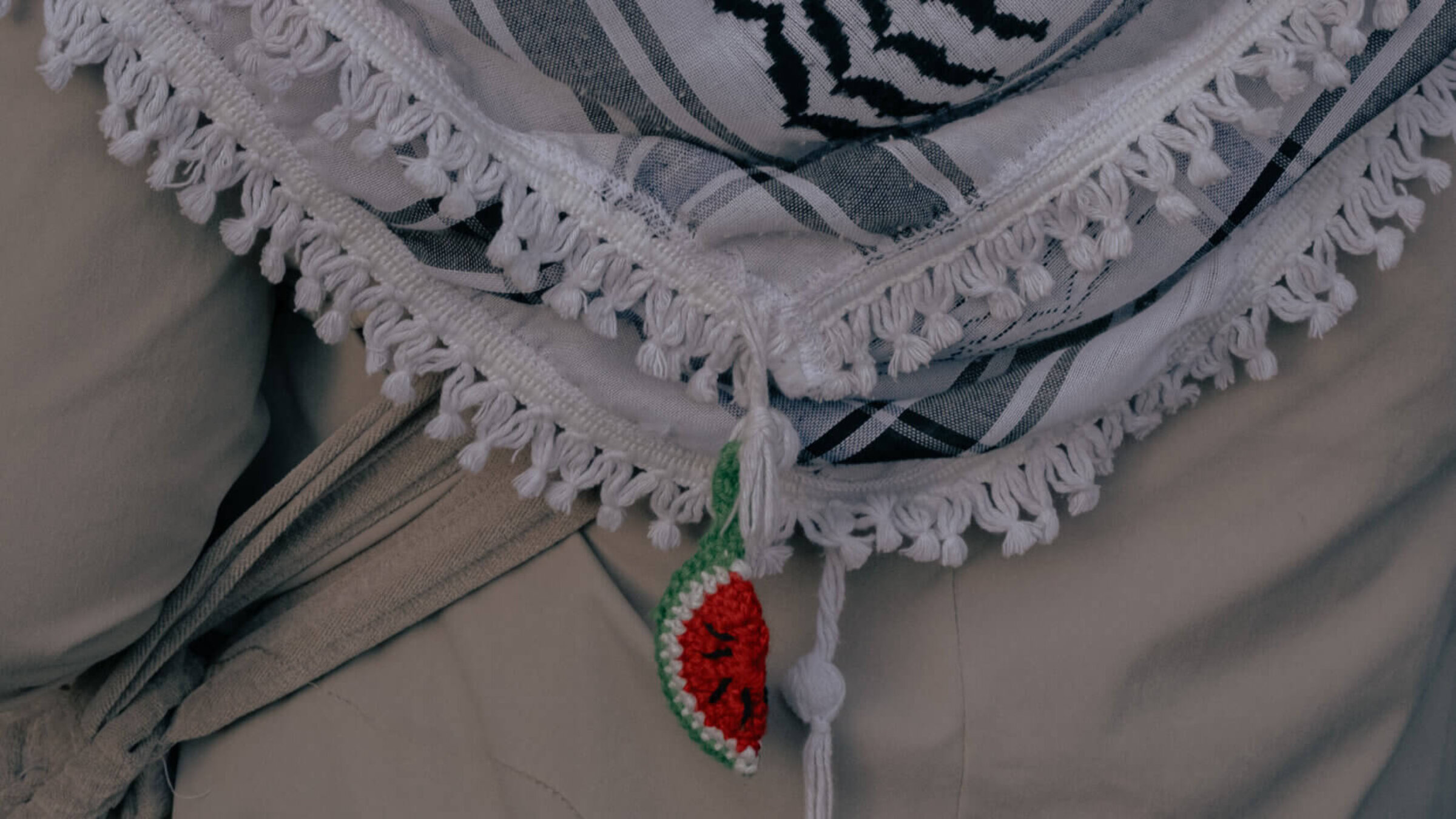
A crocheted watermelon hung from a Palestinian keffiyeh seen at a demonstration in solidarity with Palestine. Courtesy of Getty Images
The Israel-Hamas war has dominated public debate, influenced elections and seeped into nearly every aspect of life for a year. And people have learned to succinctly display their position through various visual cues, whether on T-shirts or placards held at marches.
Not all of these are new, of course; the keffiyeh and Palestinian flag have long been mainstays in protests, as have the Star of David and Israel’s colors. But many of the symbols and terms are catching on broadly for the first time; the onslaught has fundamentally altered our aesthetics and our language around the Israeli-Palestinian conflict. So we’ve written this guide to help you keep track.
Watermelon
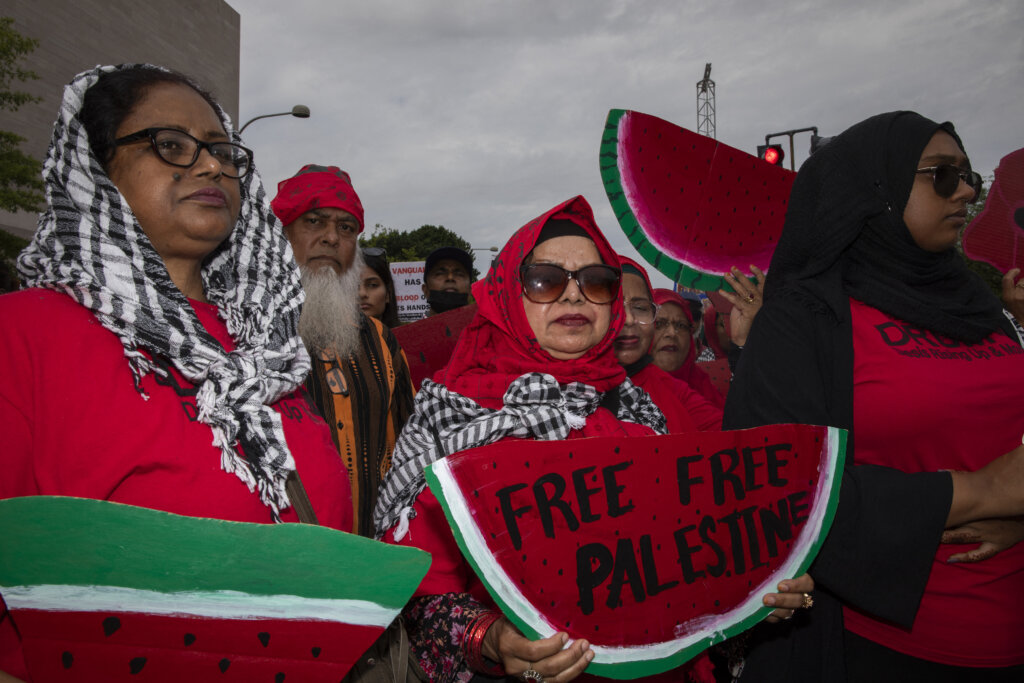
Easily the most ubiquitous symbol since the war began, the watermelon symbolizes support for Palestinians.
The summer classic shares the colors of the Palestinian flag: green and white in the rind, red in the fruit’s flesh and black in its seeds. It became a stand-in for the flag decades ago, when Israel made publicly displaying the flag illegal in 1980, sometimes arresting those flying it or displaying it on clothing. (The ban was lifted in 1993, but reinstated in 2023.)
Palestinian artist Sliman Mansour began painting watermelons in the 1980s as an act of resistance after he said Israeli officials told him he could not even paint flowers with the colors of the flag. However, the watermelon didn’t catch on globally until after Oct. 7 when supporters and activists, convinced that the Palestinian flag was being censored and shadowbanned online — which some reports have found to be true — found a way around, by displaying the fruit’s emoji in their posts and bios.
Today, it’s unavoidable — so much so that every time I see it, I have to wonder whether it’s a cute summer accessory or a political statement. Did that dog in a watermelon bandana just return from the groomers, or is its owner trying to say something via pet neckwear? (Or, I guess, was the groomer?) Is that Whole Foods-branded reusable tote with a watermelon slice in the center an edgy symbol or just a grocery bag that happens to be adorned with seasonal fruit?
Hostage posters
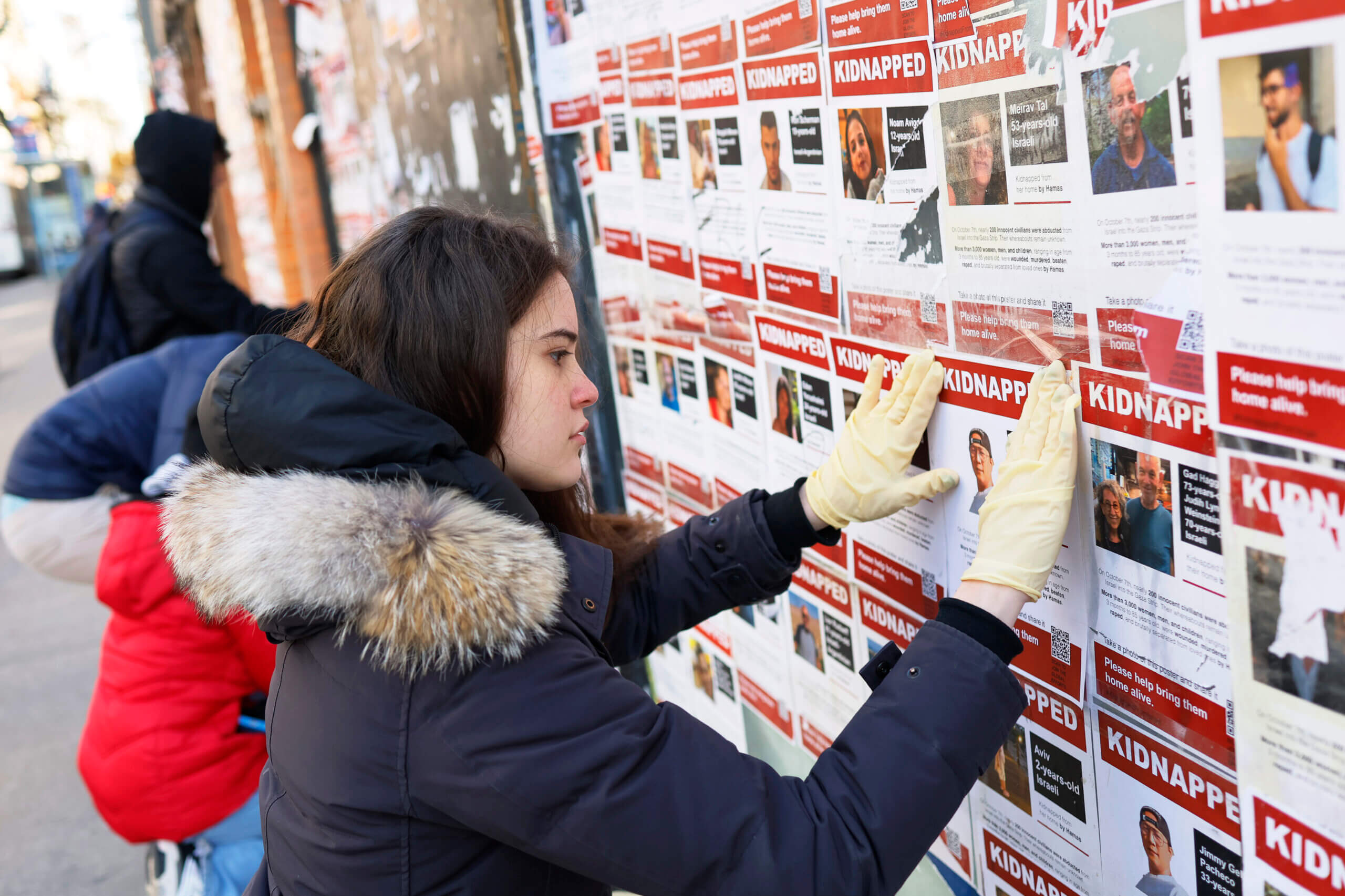
For months after Oct. 7, posters with pictures of the hostages taken by Hamas during the attack seemed to adorn every lamppost and telephone pole in New York, as well as many, many other cities, both in the U.S. and abroad.
They were designed by Israeli artists Nitzan Mintz and Dede Bandaid along with designers Tal Huber and Shira Gershoni to look like the missing child notices once commonly found on the back of milk cartons — in fact, the artists who designed the posters did make several milk carton versions. The iconic posters read “Kidnapped” in red across the top of the paper and feature the photo and name of the hostage in question, as well as the rallying cry of the hostage movement: Bring them home.
The posters became a flashpoint in the PR war; pro-Israel activists and Jews mourning the attacks plastered them across their cities to raise awareness of their plight, while pro-Palestinian activists often ripped them down, claiming that they were propaganda. Clips of the arguments and physical fights that broke out when activists on either side of the issue confronted each other either hanging or removing the posters became a nearly unavoidable piece of social media fodder, and doxxing abounded.
As the war has continued, and hostages have been returned, rescued or found dead, the posters seem to have become less common, fading into the backdrop of tattered paper on lampposts amid notices for yard sales and missing pets.
Red hands

This past awards show season, numerous celebrities walked the red carpet wearing pins in the shape of a red hand; they were a sign of the celebrities who support Artists4Ceasefire, a pro-Palestinian advocacy group. That’s not the only place they showed up, however; effigies at protests bore red, bloodied hands. Posters at marches had red handprints.
The symbol is, to those who wear it, meant to evoke the Palestinian blood on Israel’s hands or simply solidarity with Palestinians; some versions of it even feature a heart on the palm. But for many Israelis and Jews, the image is a viscerally violent one, emblematic of the antisemitism of pro-Palestinian protests.
This is thanks to a famous picture from the Ramallah lynching in 2000, during the Second Intifada. A Palestinian mob broke into a police station where two Israelis had been detained, and lynched them, eventually throwing one of the bodies out the window for the crowd to tear apart.
Afterward, a Palestinian youth triumphantly held his blood-covered hands out the window to the crowd, grinning exuberantly — and someone snapped a photo. That photo came to epitomize a traumatic era which many Israelis reference as the reason why they cannot live in peace with their Palestinian neighbors; the red hands symbolize, to them, the hatred and violence of their neighbors.
Yellow ribbon

Many actors and musicians also wore yellow ribbons on their red carpets after Oct. 7. They symbolized support for Israel, and hope for the return of the hostages.
Ribbons have long been used to indicate support for or awareness of various causes. Yellow ribbons have historically been a sign of support for deployed military forces and prisoners of war in the United States, which has particular resonance for the hostages. As early as the 1800s, women wore yellow as a sign of devotion to deployed soldiers.
In Israel, in particular, yellow ribbons have symbolized hostages in Gaza since long before Oct. 7. When soldier Gilad Shalit was held for more than five years before he was released in a prisoner exchange — one that saw Hamas leader Yahya Sinwar and the man in the Ramallah lynching photo, Aziz Salwah, returned to Gaza — mothers wore yellow ribbons to protest outside the Erez crossing, a checkpoint between Israel and Gaza.
When the Hostage and Missing Families forum started the yellow ribbon movement after Oct. 7, they also cited the 1979 hostage crisis at the U.S. embassy in Iran. During the hostages’ captivity, the spouse of one hostage asked people to tie yellow ribbons around trees as a sign of hope. This inspired the resurgence of the song “Tie a Yellow Ribbon Round the Ole Oak Tree,” a hit for the musician Tony Orlando about prisoners looking for a sign that their loved ones were waiting for their return.
Red triangle
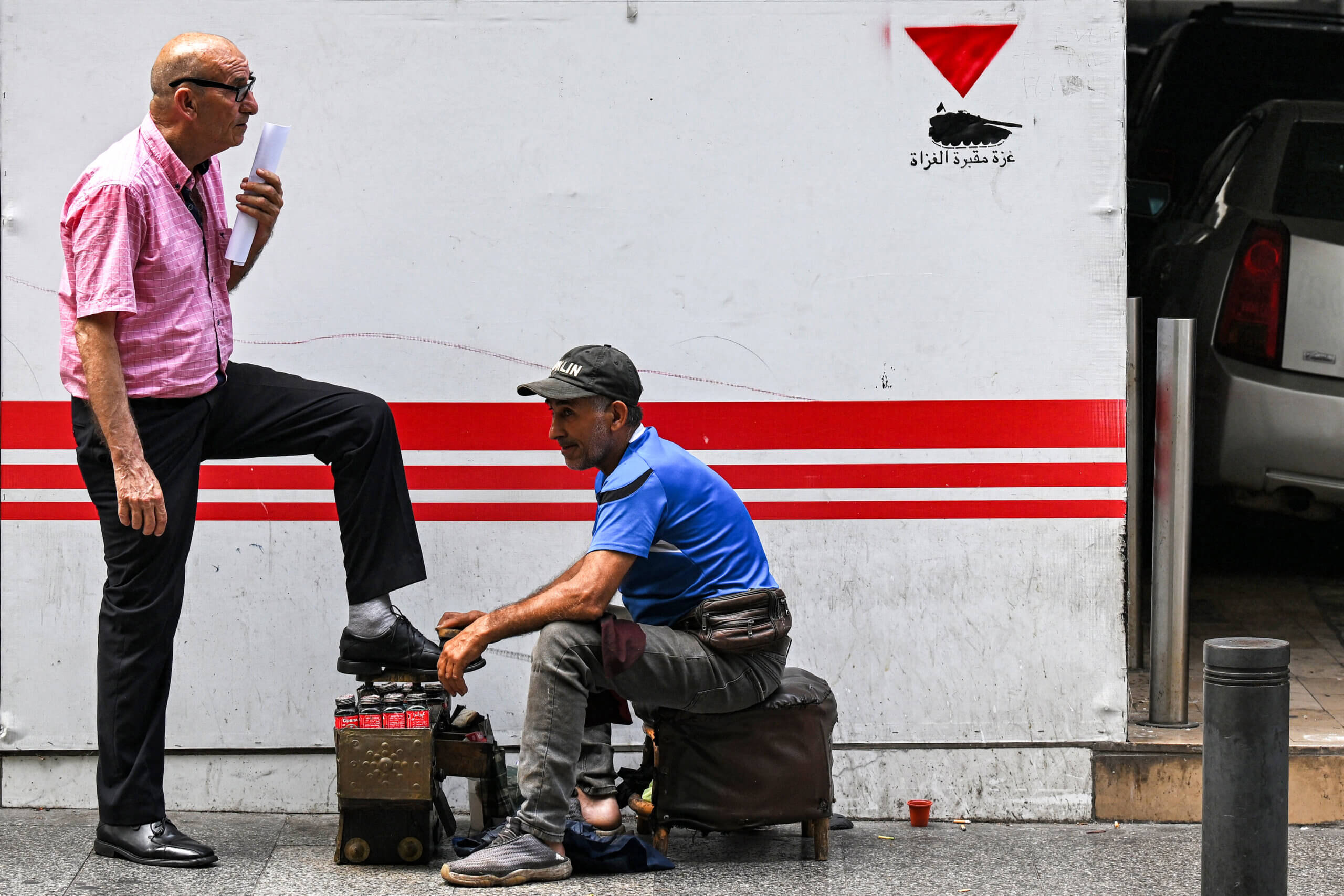
Red triangles were splashed across the stoop of a non-Jewish executive at Columbia University, painted on the door of the Jewish president of the Brooklyn Museum and daubed on the Liberty Bell. Sometimes they have appeared on placards carried by protesters.
The triangle is used by Hamas, as well as other military groups in the Middle East, to mark intended targets. This has led many to list it as an antisemitic symbol and hate crime, a way to invoke violence against various targets who support Israel.
Others, however, have argued that a red triangle is a central feature of the Palestinian flag, and protesters use it simply to indicate their solidarity with Gaza.
And still more note that the Nazis used different colored triangles to mark the uniforms of groups at concentration camps, such as LGBTQ people; the red triangle was for political dissidents, an uncomfortable connection implying retribution for Jews who disagree with the pro-Palestinian camp.
Hostage dog tags
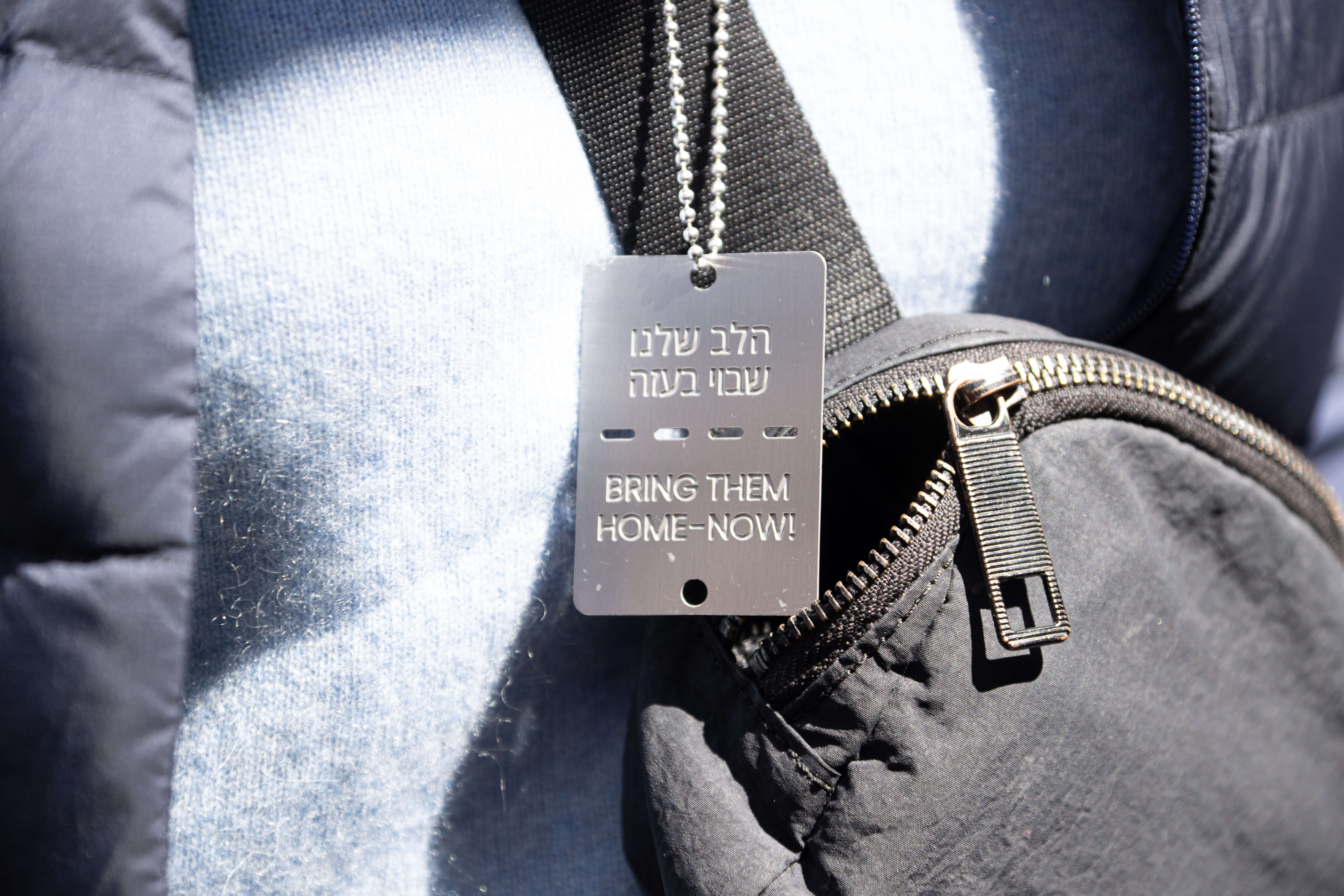
Basic dog tags commemorating the hostages were distributed by the Hostages and Missing Families Forum in Israel as a way for people to show their support. The simple tags, designed to look like military dog tags, read, in Hebrew, “Our hearts are imprisoned in Gaza,” and in English, “Bring them home now.”
But once the idea caught on as a way to symbolize one’s political ideas every day, they began to appear everywhere, including a newer and more subtle design featuring three lines across the center of the tag instead of the inscription.
Now you can buy them on Etsy in any color, or get one plated or cast in solid gold from a jeweler. They’ve become a common way to quietly display support for hostages, and politicians and public officials have given speeches while displaying them.
New names for Israel
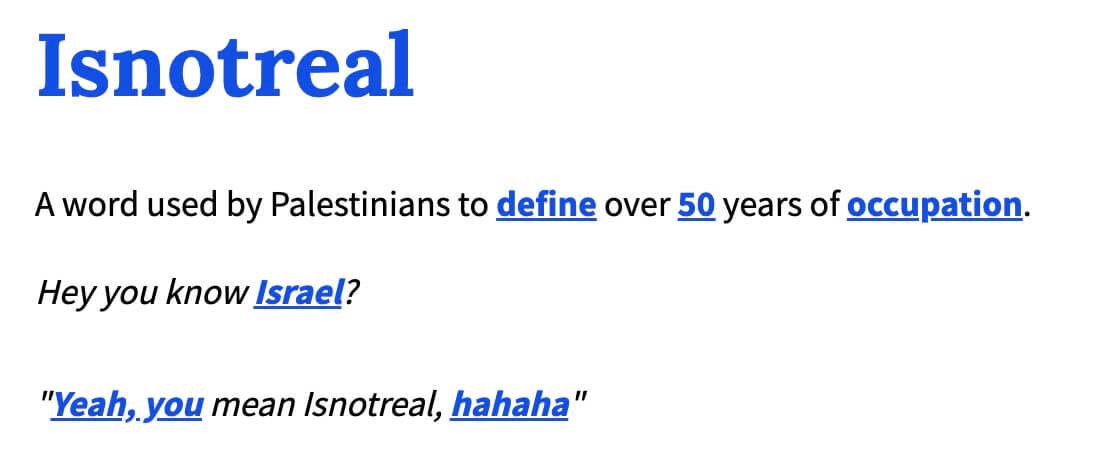
Critics of Israel have long posted snide nicknames for the country in comments under videos from Jewish creators or videos about Israel, even non-political ones.
“Israhell” and “Isntreal,” among the most common monikers, question Israel’s legitimacy, while also evading any online moderation that might automatically flag certain terms for review. (Users often do this with other potentially controversial terms; “sex” became “seggs” on TikTok, while “suicide” became “unaliving myself.”)
Users also often use “Israeli Occupation Forces” or “IOF” in place of referring to the Israel Defense Forces, or IDF, as a shorthand for calling Israel a colonialist or settler state. IOF has become so common that few people bother to spell out what the acronym stands for; some commenters seem to think it’s the army’s official name.
Masking tape
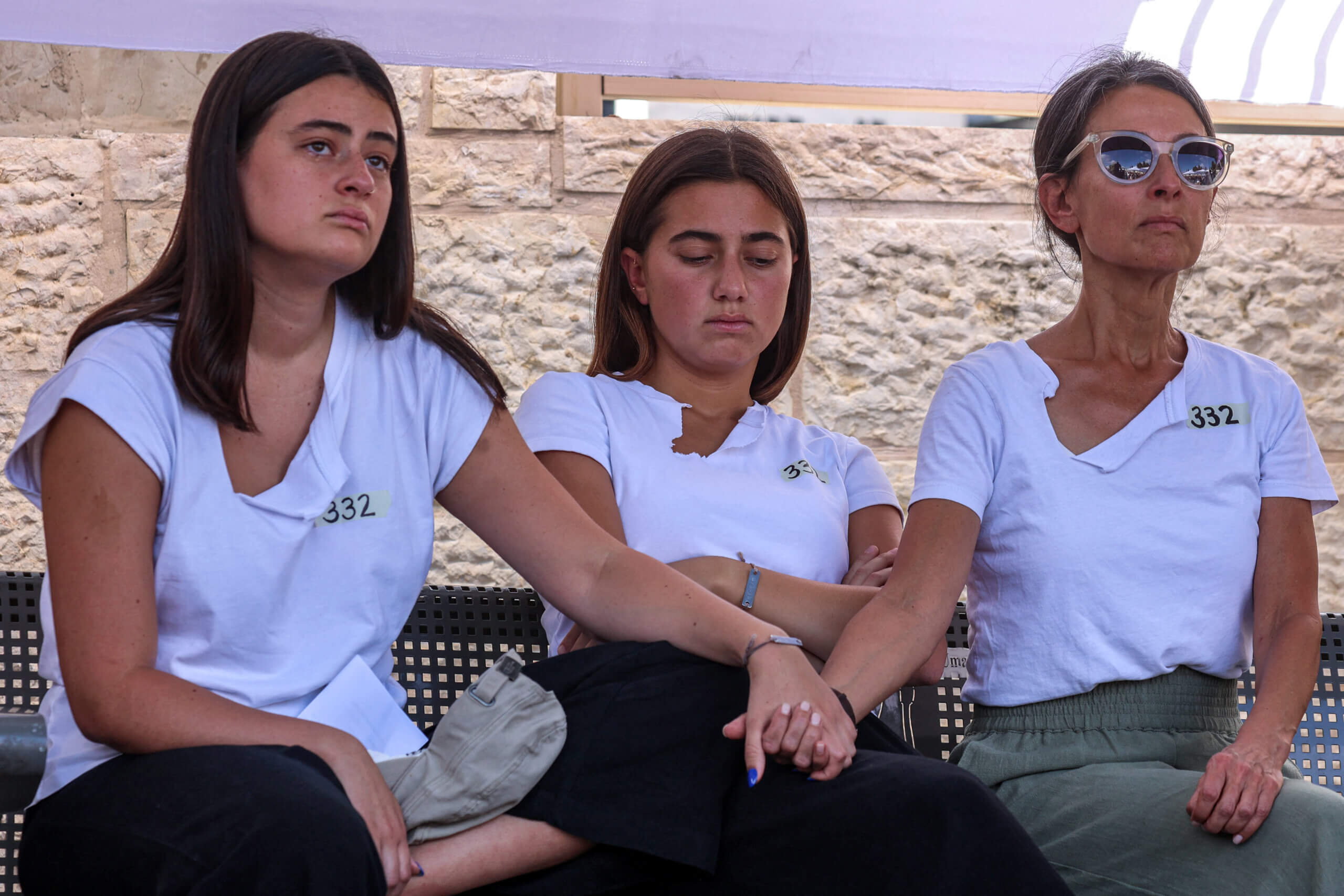
Rachel Goldberg-Polin wears a strip of masking tape with a number on it every day. And every day, that number goes up; it’s the number of days the hostages taken on Oct. 7 have been held in Gaza. In each press conference she’s given since her son Hersh was kidnapped, and even when speaking at his funeral after his body was discovered and brought back, Goldberg-Polin has the tape on her shirt, ensuring that no one forgets the people still alive in captivity.
It’s a simple symbol — there’s no explanation of what the number means, and it’s simply written with a marker on a fresh strip of tape each day. There are flashier counters out there, and more creative ones, such as a safety pin with numbered beads that can be swapped out each day.
The point is that anyone could write the days on a strip of tape; that everyone should bear a small reminder of the hostages plight. It’s a poignant and easily recognizable reminder of the time the hostages still held in Gaza have been missing, their fates unknown. And Goldberg-Polin has continued to keep count on behalf of all the hostages still missing, even though her son has finally, as she said in her eulogy, been freed.
Horns
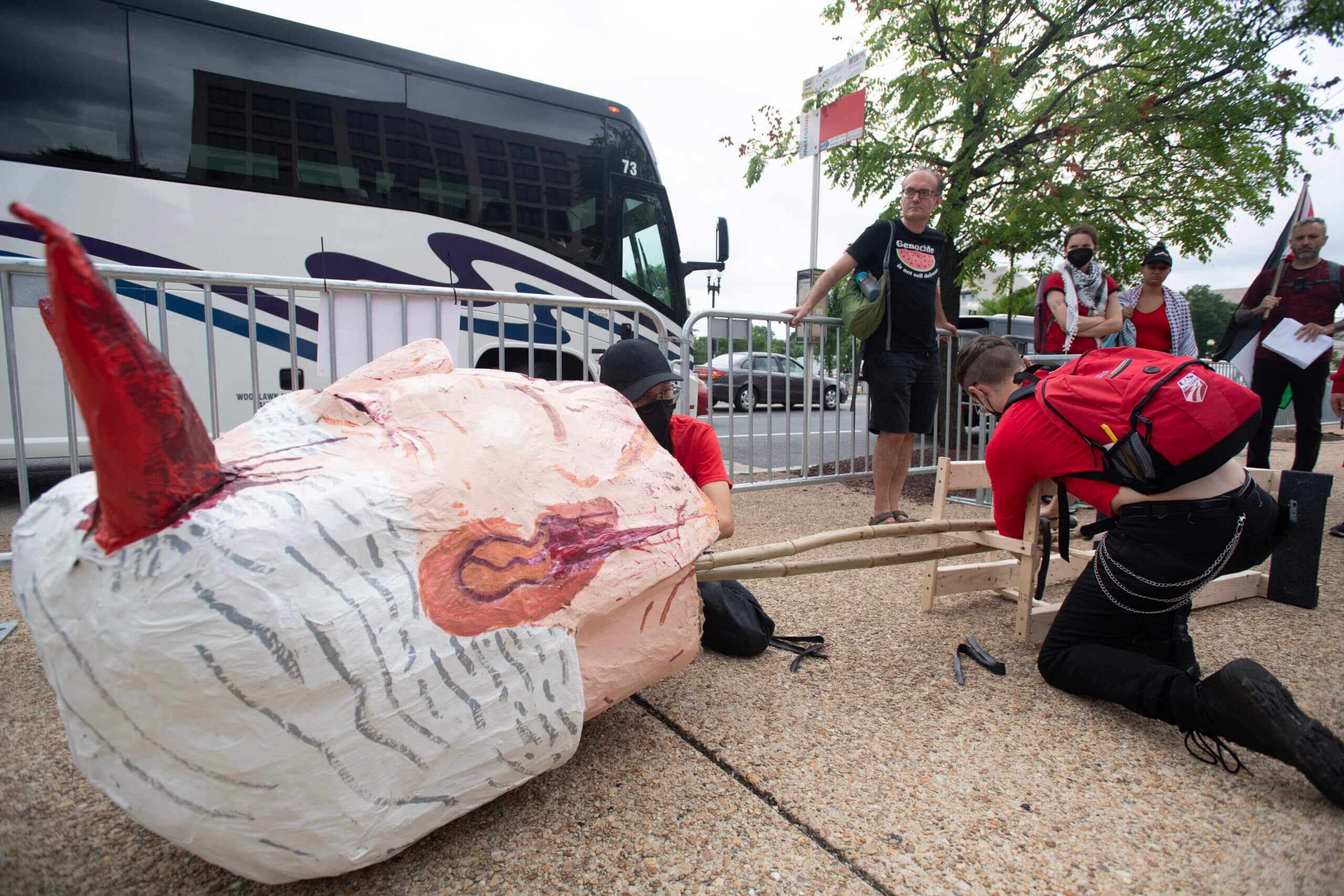
Horns have long been associated with antisemitic stereotypes; Christians often depicted Jews as demonic, and there was also an unfortunate — if potentially purposeful — biblical mistranslation that led to artists depicting Jewish characters with horns for centuries.
More recently, in pro-Palestinian protests and pamphlets, depictions of various pro-Israel figures — some Jewish, some not — have included horns. The implication is, of course, to associate them with evil, like the devil, and thus to criticize Israel’s actions during the war. Numerous non-Jewish figures have been depicted with horns during moments of political debate and disagreement for centuries — but the use of the symbol in marches criticizing Israel makes the antisemitic history a bit too resonant. The echoes of centuries of pogroms and antisemitism means the horned depictions of Benjamin Netanyahu feel a bit, well, pointed.


